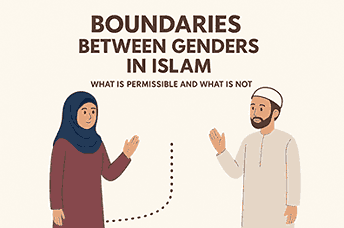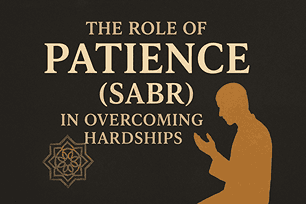Islamic
gender segregation in Islam, halal and haram relationships, interaction between genders in Islam, Islamic ethics on male-female interaction, Islamic gender boundaries, Islamic modesty rules, Islamic moral values, Islamic teachings on hijab, maintaining chastity in Islam, permissible gender interaction Islam, Zeeshan Azhar
Zeeshan Azhar
0 Comments
Boundaries Between Genders in Islam: What Is Permissible and What Is Not

In today’s modern world, men and women interact in many settings — schools, workplaces, and public spaces. However, Islam provides clear and balanced guidelines to maintain modesty and respect between genders. These boundaries are not meant to limit anyone but to protect hearts from falling into sin and to preserve the dignity of both men and women. Understanding what is permissible and what is not can help Muslim youth stay on the right path.
The Concept of Modesty (Haya) in Islam
Modesty, or haya, is a central value in Islam. It applies to both men and women. The Qur’an commands believing men to lower their gaze and guard their modesty, and it gives the same command to believing women (Qur’an 24:30-31).
This shows that the first step in gender boundaries starts from within the heart. When one trains the eyes and thoughts to stay pure, physical actions also stay within the limits of Islam. Modesty in behavior, speech, and dress helps reduce temptations and prevents emotional attachment outside of lawful marriage.
Permissible Interactions Between Men and Women
Islam allows interaction between non-mahram men and women when there is a genuine need or purpose. For example, working together in professional settings, buying or selling, teaching or learning, and seeking advice are all allowed. However, these interactions should follow certain conditions:
Professional and purposeful: The talk should be about the matter at hand, not personal or flirtatious.
Public environment: Meetings should be in open spaces, not in isolation where temptation can grow.
Proper dress code: Both genders must observe Islamic hijab — men should dress modestly and women should cover their bodies except for face and hands as prescribed.
Lowering the gaze: Both should avoid staring or looking with desire.
When these guidelines are followed, interaction remains clean and does not open the door to fitnah (temptation).
Prohibited or Risky Interactions
Islam strictly prohibits actions that can lead to temptation or immoral behavior. These include:
Khalwah (seclusion): Being alone in a private place with a non-mahram is forbidden because it increases the chances of falling into sin.
Flirtatious or playful talk: Speaking softly or in a teasing tone can stir desires and is discouraged.
Unnecessary physical contact: Shaking hands or casual touching between non-mahrams is not allowed.
Forming emotional bonds: Becoming emotionally attached or forming secret relationships can harm the heart and lead to haram.
These prohibitions are meant to block the path to zina (fornication), which is a major sin in Islam.
Maintaining Digital Boundaries
In the modern age, interaction also happens through phones and social media. Islam’s principles apply here as well. Chatting casually, sending private messages, or sharing personal photos with non-mahrams can quickly become emotionally dangerous.
Muslims should keep their online communication professional and avoid unnecessary private conversations. Parents and teachers should also guide youth on responsible use of technology to protect their hearts and faith.
How Boundaries Protect the Heart and Society
Following gender boundaries is not just about personal piety. It protects the entire society. When people respect these limits:
Trust increases between families and communities.
Temptations and scandals reduce.
Young people focus on education and growth instead of distractions.
Marriages become stronger because relationships start in a halal way.
These boundaries create a pure environment where everyone feels safe and respected.
Conclusion
Islam provides a balanced approach to gender interaction. It neither isolates men and women completely nor allows free mixing without limits. Instead, it gives practical rules to keep hearts clean and society strong.
By practicing modesty, lowering the gaze, avoiding seclusion, and keeping communication purposeful, Muslim men and women can work and live together while protecting their faith. These boundaries are not restrictions — they are shields that guard our dignity, honor, and spiritual well-being. Following them is an act of obedience to Allah and a path to His blessings.
Tag
gender segregation in Islam halal and haram relationships interaction between genders in Islam Islamic ethics on male-female interaction Islamic gender boundaries Islamic modesty rules Islamic moral values Islamic teachings on hijab maintaining chastity in Islam permissible gender interaction Islam Zeeshan Azhar













Post Comment